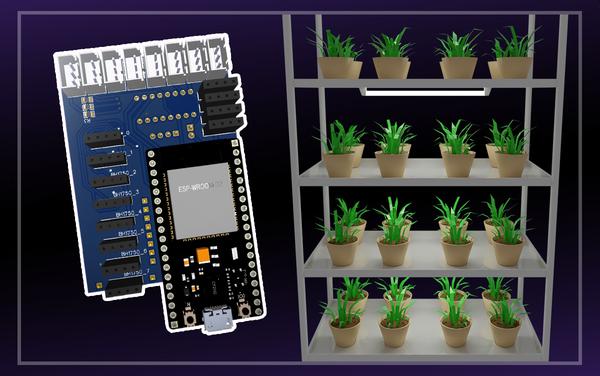Hydroponix


Services
Technologies
Features
In the era of precision agriculture and Internet of Things (IoT), Hydroponix emerges as a game-changing smart farming solution. This innovative valve and sensor system harnesses cutting-edge technology to meticulously control humidity, light, and temperature, creating optimal conditions for plant growth. As an automated smart farming system, Hydroponix empowers growers to maximize yields while minimizing manual intervention, paving the way for more efficient and sustainable agricultural practices.
Project Description: Modular Smart Farming for Unlimited Scalability
Hydroponix’s modular design sets it apart in the world of smart farming solutions. The system consists of:
- Modular Units: Integrated irrigation systems and sensor arrays placed directly on growing beds.
- Central Node: A hub that collects, processes, and displays data from all modules.
- Server Interface: Provides real-time monitoring and control capabilities.
This modular approach offers unparalleled scalability, making Hydroponix adaptable for various applications:
- Commercial large-scale farming
- Urban agriculture initiatives
- Home gardening and small-scale cultivation
Cutting-Edge Technology Powering Hydroponix
Hydroponix leverages state-of-the-art IoT and microcontroller technology:
Central Node: ESP32 Platform
- Functions:
- Monitors and controls illumination, temperature, and ventilation
- Stores and processes data
- Generates graphical representations of environmental conditions over time
Modules: STM32 Microcontrollers
- Responsibilities:
- Control of pumps for precise irrigation
- Monitoring and adjustment of water pH and Total Dissolved Solids (TDS)
- Regulation of humidity levels
- Automated dosing of fertilizers
Remote Access
- Browser-based interface for easy monitoring and control from anywhere
Functional Capabilities: Precision Control for Optimal Growth
Hydroponix excels in providing precise environmental control:
-
Adaptive Environmental Management:
- Real-time adjustment of humidity, light, and temperature
- Tailored conditions for each stage of plant development
-
Smart Irrigation:
- Precise water and nutrient delivery
- Prevention of over or under-watering
-
Nutrient Optimization:
- Continuous monitoring of pH and TDS levels
- Automated adjustment of nutrient concentrations
-
Data-Driven Decision Making:
- Comprehensive data collection and analysis
- Insights for continuous improvement of growing conditions
Power Requirements and Infrastructure
Hydroponix is designed for easy integration into existing infrastructure:
- Operates on standard 220V power supply
- Compatible with most electrical systems worldwide
Key Benefits of Hydroponix
- Increased Productivity: Automation reduces labor costs and human error
- Resource Efficiency: Optimized use of water, fertilizers, and energy
- Remote Management: Access and control from anywhere via web browser
- Scalability: Modular design allows for easy expansion
- Environmental Sustainability: Reduced water and chemical usage
- Consistent Quality: Precise control leads to uniform crop quality
- Data-Driven Insights: Continuous monitoring enables ongoing optimization
Wide-Ranging Applications
Hydroponix is versatile and suitable for numerous scenarios:
- Commercial Agriculture: Large-scale, high-efficiency crop production
- Urban Farming: Maximizing yield in limited urban spaces
- Controlled Environment Agriculture (CEA): Ideal for greenhouses and vertical farms
- Research and Development: Perfect for agricultural experiments and crop trials
- Challenging Environments: Enables farming in deserts, poor soil areas, or even space stations
- Education: Excellent tool for teaching modern agricultural techniques
Case Studies: Hydroponix in Action
-
Desert Greenhouse Project:
- Location: United Arab Emirates
- Result: 70% water savings, 40% increase in tomato yield
-
Urban Vertical Farm:
- Location: Singapore
- Outcome: 90% reduction in land use, 95% water efficiency compared to traditional farming
-
Arctic Research Station:
- Location: Svalbard, Norway
- Achievement: Year-round fresh produce production in extreme conditions
Future Developments and Roadmap
Hydroponix continues to evolve, with planned enhancements including:
- AI-driven predictive maintenance
- Integration with blockchain for improved traceability
- Expansion of crop-specific growth models
- Development of mobile app for even easier management
Conclusion: The Future of Farming is Here
Hydroponix represents a significant leap forward in smart farming technology. By combining IoT, precision control, and modular design, it offers a scalable, efficient, and sustainable solution for modern agriculture. Whether deployed in sprawling commercial operations, compact urban farms, or challenging environments, Hydroponix is poised to play a crucial role in shaping the future of food production.